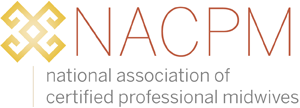In the November 2017 NACPM webinar, RE:BIRTH: Navigating and Mediating Maternal Stress and Birth Outcomes in Pre- and Post-Hurricane Puerto Rico, Oregon State University researchers Holly Horan and Melissa Cheyney discussed their collaborative research that focuses on the relationship between perceived maternal stress and gestational age at delivery. Existing research hypothesizes an association between perceived maternal stress and preterm birth, and midwifery care has been shown to be the only viable solution to reducing preterm birth rates within communities of color. Horan and Cheyney collaborated with Puerto Rican maternal and infant health providers to develop a project to better understand experiences of maternal stress and pregnancy and how they relate to birth outcomes in Puerto Rico.
Gaps in the Epidemiological Data: Over the last 20 years, epidemiological data on birth outcomes in Puerto Rico indicate that this United States (US) colony has a high rate of preterm birth1 in addition to other poor birth outcomes, including elevated cesarean section (46%)2 and a low birthweight rates#. As of 2016, Puerto Rico had an unusually high rate of preterm birth (11.5%), occurring before 34 weeks completed gestation2. To date, researchers have been unable to explain why Puerto Rico is experiencing such a high rate of preterm birth, as studies specific to Puerto Rico argue that typical epidemiological factors associated with preterm birth rates in the continental US do not explain the high rate of preterm birth on the island1.
Investigating the Gaps: After completing a 2014 pilot study on Puerto Rican providers’ perspectives on maternal and infant health issues on the island, Cheyney and Horan developed a two-phase research project designed to explore how perceptions of maternal stress contribute to gestational age at delivery in Puerto Rico. In the first phase, beginning in August of 2016, 25 pregnant and recently postpartum women in Puerto Rico were interviewed about their experiences of stress during pregnancy to provide a context for stress that was unique to island. In December of 2016, the second phase was initiated to understand the relationship between maternal perceptions of stress, their biological experiences of stress via the hormone cortisol collected from a hair sample, and how these experiences of stress impacted gestational age at delivery. Horan and local, Puerto Rican research assistants traveled to two clinical sites where they invited pregnant people in their first trimester to participate. Pregnant individuals who volunteered and were verbally consented into the study agreed to one prenatal visit per trimester. At the prenatal visits, the participants completed two stress surveys and provided a hair cortisol sample. In addition, there was a postpartum visit where the participant provided patient reported outcomes about the birth, completed a postpartum interview reflecting on their experiences of stress and pregnancy, and provided a final maternal and infant hair sample. Eighty-six participants were recruited for this second phase of the project.
Disaster Strikes: On September 20th, 2017, the project was abruptly halted due to the damages sustained after Hurricane Maria. Horan and Cheyney plan to finish data collection with as many of the remaining participants as can be relocated to complete their postpartum data collection visit. This will enable us to understand how the hurricane influenced their births and early parenting experiences. Preliminary findings indicate that despite the global community’s concerns about the Zika virus, poverty and colonization are significantly greater sources of stress for pregnant and recently postpartum participants in Puerto Rico. In addition, the events of Hurricane Maria have further exposed how the second-class citizen status of Puerto Rican people impacts health and well-being across the island and across social statuses.
References
1) Cordero J. Preterm Births in Puerto Rico 2006-2016. March of Dimes: Sunshine Seminar. 2016. https://progyn.org/wp-content/uploads/2016/08/6.-Dr.-Jose-Cordero-Sunshine-MOD.pdf. Accessed November 6th, 2017.
2) Hamilton B, Martin J, Osterman M, Driscoll A. Births: Provisional Data for 2016. NVSS Vital Statistics Rapid Release. June 2017; 2: 2-21. https://www.cdc.gov/nchs/data/vsrr/report002.pdf. Accessed October 25th, 2017.
3) Landale N, Oropesa S, Davila AL. Puerto Rican Maternal and Infant Health Study (PRMIHS), 1994-1995. Ann Arbor, MI: Inter-university Consortium for Political and Social Research [distributor]. n.d. https://doi.org/10.3886/ICPSR36238.v2. Accessed November 27th, 2017.
